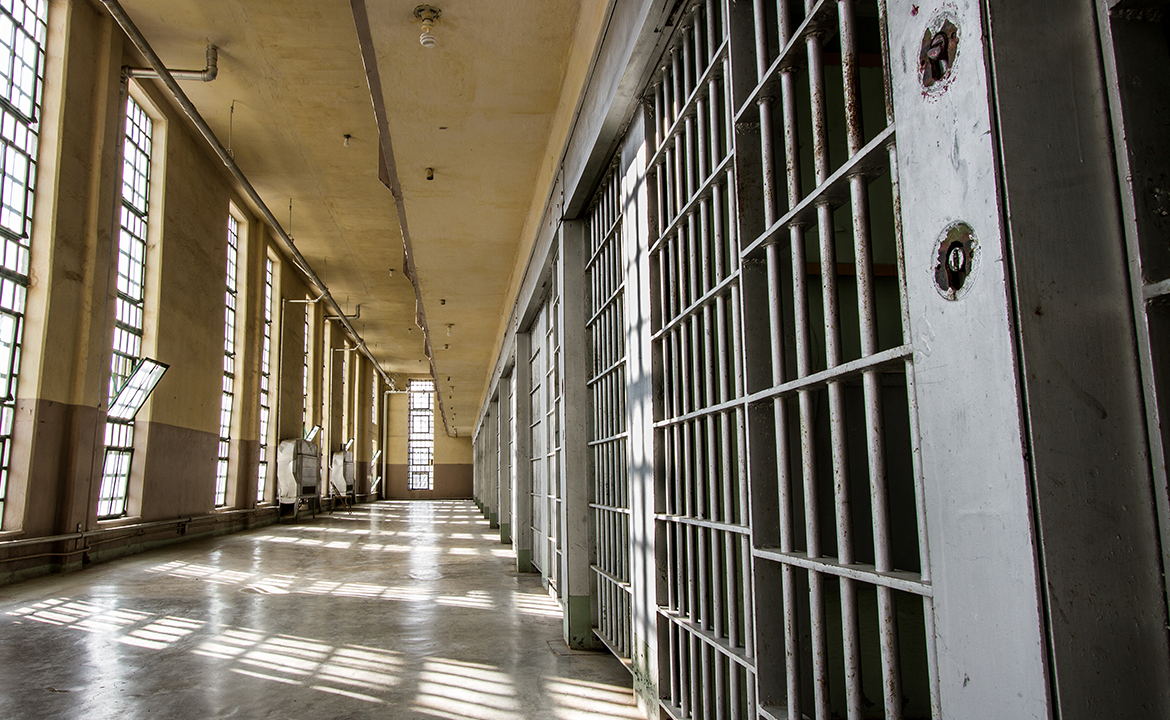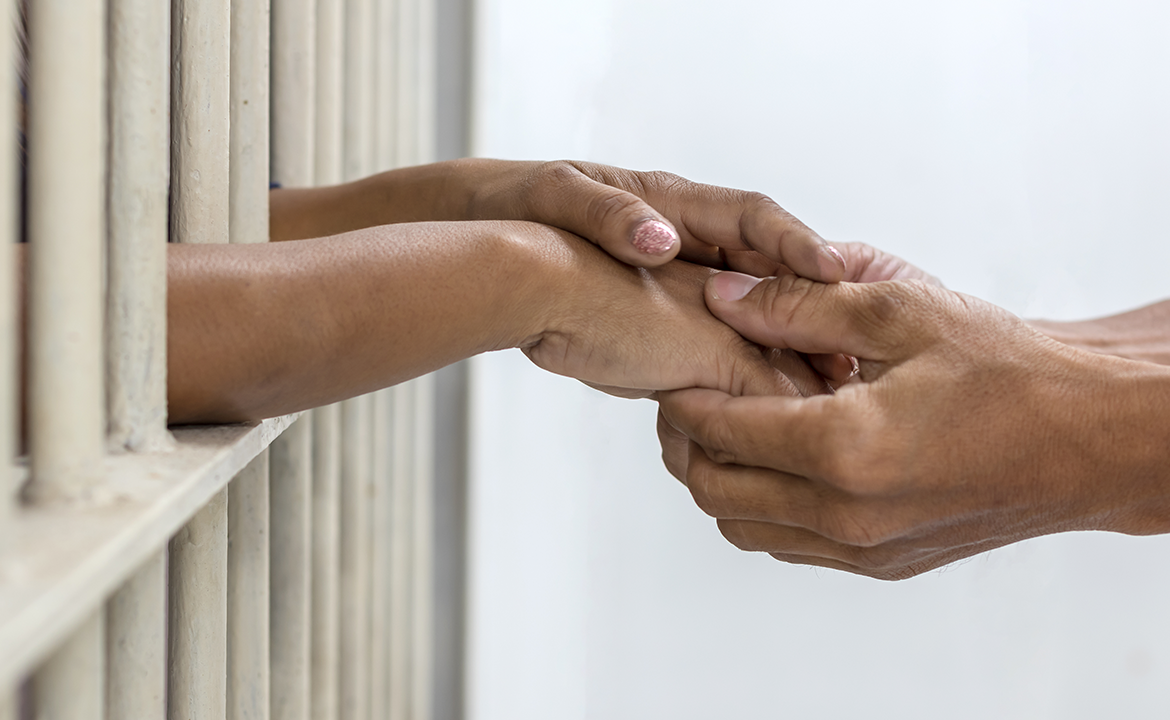While the words jail and prison often overlap in American society, it’s essential to know the difference between them. A jail is a temporary holding facility for people serving a relatively short prison sentence or awaiting trial.
When a person first gets arrested, they are usually taken to jail. There, they will stay locked up in pretrial detention until they either post bail or complete their trial. On the other hand, prisons are where people serve longer sentences once they have been convicted of crimes.
Local Police Stations And Jails
The police station will usually handle the prisoners booking and jail-processing activities and await further transfer orders from the central police station.
Temporary Holding Facility
Some local jails are located within the actual police stations and are considered temporary holding facilities. These are very temporary quarters for the prisoner. The prisoner will usually be transported out of the local police station and into a separate county jail within 24 to 72 hours of arrest.
Locating Someone Who Was Arrested
Suppose a loved one or friend has been arrested and is currently in a local jail or has been transferred to the county jail, awaiting a hearing, trial, sentencing, or bail decision. In that case, you will want to locate the county jail they are incarcerated as soon as possible.
This will require you to know the person’s booking number, full name, and date of birth.
County Jails
There are over three thousand county jails in the United States, and on any given day, those jails hold roughly half a million people. If someone you know has just been arrested, you will likely find them in a local jail. The fastest way to locate them is by calling and inquiring about their full name and date of birth.
If your understanding of jails has come primarily through U.S. popular culture, you may envision a tiny, single-celled facility with a small window peeking out onto a city street, but this is fiction.
Overcrowding In County Jails
Today most jails, particularly those in larger cities, are dirty, overcrowded, and violent facilities. In recent years, due to the deplorable conditions and the corrupt nature of holding someone prisoner because they are poor, anti-prison activists have put tremendous pressure on the function of jails.
Not only have organizations like the Coalition to End Money Bond built sophisticated networks of community bond funds that use donated money to bail out people in need, but they have also started to challenge the purpose of jails outright.
The best bet for tracking a person in county jail is to contact the local arresting police station and inquire whether the person has been arrested. Most police stations will provide you with this information if you represent a prisoner’s family member or lawyer or are trying to arrange bail.
It’s worth noting that most local jails will allow the lawyers and their private investigators to visit an incarcerated client during preset hours and under highly secure and controlled circumstances.
County jails vary in size and capacity depending on the local population. Most county jails are not considered maximum-risk facilities. Yet, many can be dangerous felons who are awaiting to be bound over to Superior Court upon their indictment. An indictment hearing is performed either by a preliminary hearing or by the grand jury.
The Federal And State Prison Systems
Interacting with the U.S. prison system or the prison industrial complex can be a scary and stress-inducing experience. Beginning with the many different types of prisons in the United States, it’s typical to feel overwhelmed and anxious by the size and intensity of this system.
Knowing the difference between the various facilities is a crucial first step in supporting a loved one inside prison or preparing for a prison sentence yourself. These spaces serve different purposes, hold other classes of offenders, and, most importantly, have unique rules. Below you will find the most common prison types in the United States and some preliminary information about what happens inside each one.
Types of Prison Security Levels
Minimum security
Often called Federal Prison Camps (FPCs), these prisons typically house non-violent offenders in dorm-like units. Minimum security facilities typically allow prisoners to work off-site.
Low security
These facilities look more like traditional prisons with solid fencing and higher staff-to-inmate ratios. Some prisoners here will have a history of violence but usually serve sentences of less than 20 years.
Medium security
Federal correctional institutions (FCIs), or medium security types of prisons, are more likely to house violent offenders. At this security level, prisoners are held in cells, and a more rigorous set of rules is enforced by correctional staff.
High security
Usually called United States Penitentiaries or USPs, these facilities closely monitor inmates with guards and cameras. These prisons will typically be surrounded by razor-wire fencing and have watch towers.
State Prisons
A state prison is a type of prison facility funded and directed by state authorities. Roughly 1830 state prisons exist in the U.S. and currently hold over 1.2 million people. While the daily operations of some state facilities (less than 10%) have been leased out to private contractors, most state prisons still need to be managed by local governments and financed by public money.
The era of mass incarceration, fueled by federal tax dollars in the 1994 Crime Bill, led to an explosion in state prison construction unseen in the history of organized human life. Between 1990 and 2005, the number of state prisons nearly doubled.
Three Security Levels of State Prisons
The state prison system has three security levels – minimum, medium, and maximum. Like federal prisons, maximum security prisons keep prisoners inside their cells 22-24 hours a day.
Medium, and especially minimum-level facilities, offer prisoners more time outside their cell and provide educational and work opportunities. However, it’s essential to know these programs are incredibly underfunded, and data shows less than 10% of prisoners will have access to them during their sentences.
STATE PRISONS
Select a state below to see a list of state prisons operating in each particular state, along with mailing addresses for inmates.
| AL | HI | MA | NM | SD |
Federal Prisons
Federal prison systems are managed by the Federal Bureau of Prisons, a federal law enforcement agency under the Department of Justice. As of 2023, 110 federal prisons in the U.S. currently hold over 200,000 people who have committed federal crimes or are accused of violating federal laws.
Locating A Federal Prison In Your State
These crimes include offenses committed across state borders, political crimes, and so-called “white collar” crimes such as racketeering, money laundering, and fraud. Federal prisons do not offer parole, so the average length of time served is significantly higher than in state prisons.
Court Determines Sentence Using Two Sources
The Federal Criminal Statute Violated
The statute under which the criminal conviction was based sets forth the maximum penalties and other important factors.
The Federal Sentencing Guidelines
The federal criminal sentencing guidelines set out the recommended sentencing and security levels within the federal system depending on the crime(s) upon which the prisoner was convicted. The guidelines offer a full range of sentencing guidelines involved as well as other factors.
Levels Of Confinement
Maximum Security
Maximum security prisons confine their prisoners to their cells for 22-24 hours a day, seven days a week.
Medium And Minimum Security
Medium and minimum-level security facilities offer a much broader range of hours outside their cells, including time spent in the prison yard, where they can socialize and engage in exercise. Educational opportunities, including vocational training, may also be available.
Private Prisons
A private prison is a for-profit prison managed by a third party. The companies who run these prisons usually enter into private contracts with government agencies and get paid either a per diem or monthly rate based on occupancy. These contracts may be for operation only or construction and operation.
In recent years, private types of prisons have become a highly mediatized aspect of the mass incarceration era.
One reason is that these facilities evoke a dystopian image of caging people for profit. One primary concern put forth by activists is that business interests routinely prioritize profit over people.
In the prison industry, this has a particularly corrosive effect as it pits personal financial gain against the presumed rehabilitation process. It’s also helpful to remember the basic tenets of capital accumulation rooted in growth and profitability.
Many organizations, including groups like the American Civil Liberties Union, claim that the development of the private prison industry perpetuates the need for more incarcerated people.
While private prisons are a concerning development in U.S. prison policy to most, it’s important to remember that private prisons still only account for about 9-to-11% of prisons in the United States.
The vast majority of prisons in this country are still organized and financially underwritten by the state.
Supermax Prisons
Supermaxes are types of prisons built solely for long-term solitary confinement. They are isolating apparatuses set in remote locations far from major cities.
There are over sixty supermax facilities nationwide, most full of eight-by-ten-foot cells meant to hold prisoners twenty-three-and-a-half hours a day.
Super Max Goal: A Minimal-to-No Human Contact
Most cells are windowless, as prisoners live under only fluorescent lights. These spaces are equipped with cameras, and their monitors are surveilled from a central vantage point by correctional officers.
The supermax prison and long-term solitary confinement remain relatively unknown parts of the prison system. One reason for this is the strict visitation protocols that make the happenings inside supermax prisons nearly impossible to observe.
Immigrant Detention Centers
For people attempting to unlawfully immigrate to the United States, imprisonment is always looming. The United States government holds tens of thousands of immigrants per year in detention centers to enter the country illegally and then be deported.
According to the Global Detention Project, the United States immigrant detention system is the largest. Mandatory detention for “illegal immigration” was first ordered by President Bill Clinton in 1996 as part of the Illegal Immigration and Immigrant Reform and Responsibility Act.
Since then, the number of people detained for entering the country illegally has risen steadily from 8,500 in 1996 to nearly 50,000 at the present day.
U.S. immigrant prisons are operated by the Immigration and Customs Enforcement Agency (ICE), created under the Department of Homeland Security in 2003.
ICE Human Rights Violations
Many human rights organizations have charged ICE with violations, including inadequate medical care in these detention facilities.
During the presidency of Donald Trump, reports of human rights violations of the constitution’s 8th Amendment against cruel and unusual punishment increased rapidly as the number of people detained consistently outgrew available beds, resulting in the construction of makeshift camps along the southern border of Texas.
In the summer of 2020, multiple news agencies reported ICE practices such as tear-gassing detainees and separating migrant children from their families.
Other Prison Facilities
Aside from these primary types of prisons, you may encounter several other spaces when interacting with the prison system. These include Youth Detention Centers, Tribal Jails, Military Prisons, Psychiatric Hospitals, and Halfway Houses.
All of these spaces hold people against their will and employ various levels of violent control. Suppose you are preparing for a prison sentence or supporting a loved one inside. In that case, it’s essential to recognize the emotional and psychological toll on families of prisoners.










